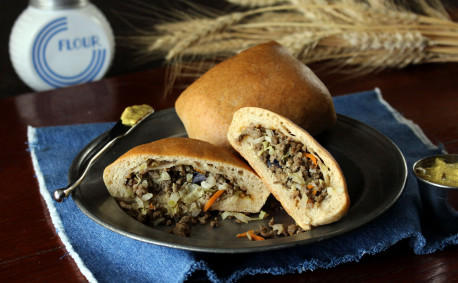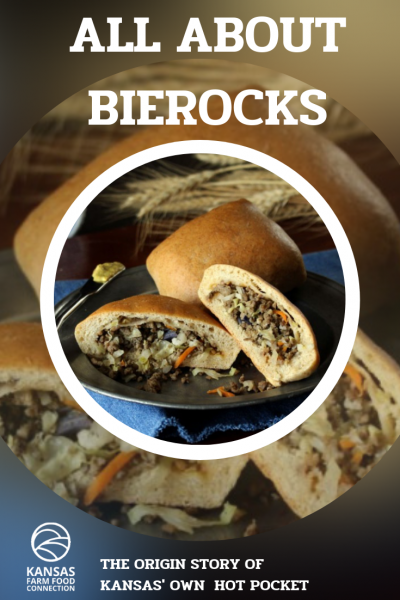Why Bierocks Are a Kansas Staple
If you grew up in Kansas, you’re probably familiar with bierocks. The cabbage, meat and onion-stuffed dough balls are a Wheat State tradition, and are served at restaurants everywhere, especially in small city diners.
But do you know why? How did these little pastry pockets become a staple of Kansas’ culinary history? And where did they come from in the first place?
According to folklore, the dish was created back in the 19thcentury when women wanted to help their men have a better day at work—some things never change, right?
The legend goes that wives in Eastern Europe needed a hearty, portable meal for their husbands who were working out in the fields.
Thus, bierocks were born.
The bread casing kept all the yummy filling where itshould be, making this nifty meat pie simple to eat and hard to spill—no Tide to Go in those days.
Bierocks spread throughout Europe as a popular choice for working families. Eventually, German Russian Mennonites introduced them to the United States when they immigrated in the 1870s. As they headed west, bierocks went along for the ride.
Many of these pioneer farming families settled in either Kansas or Nebraska, at which point this forerunner of the Hot Pocket met the proverbial fork in the road. The Kansas crowd kept preparing bierocks as they had for years, passing down the recipe and solidifying its place in Kansas’ history. In Nebraska, however, the bierock morphed into something called a runza. Runzas have the same ingredients but are usually rectangular and can include extra ingredients like cheese.
Over a century later, Kansans are still enjoying the rustic bierock. And while they can be found here and there in other parts of the country, they are ingrained in our state’s culture forever.
If you’d like to make your own bierocks, or have never experienced one before, try this recipe!



